Westridge Resources’ (WST-V) Charay gold-silver property is an easy drive along a modern freeway, lined with sleepy agricultural land, 30 km northeast of Los Mochis here in northwestern Mexico.
The Sinaloa-Sonora irrigation region — locally referred to as the “Valle del Fuerte” — is known for producing sugar cane, cotton, rice and tomatoes. Los Mochis has the vibe of a town built on agriculture, and a commercial fishing industry operates out of nearby Topolobampo, the second-largest natural deepwater port in the world.
The Sierra Madre region of northwestern Mexico has a reputation for criminal cartel activity and elevated security concerns, but Los Mochis seems divorced from any current strife or local unrest.
In fact, according to Westridge president and chief executive officer Peter Schulhof, geopolitical stability was one of the company’s main considerations when it came to choosing a project here.
“We saw proposals for promising properties throughout the world, and other options in and around Mexico,” he mentions during the ride into town from the Valle del Fuerte airport. “We looked at projects in Africa and the Middle East. In the end, we just wanted to know we could count on that safety and peace of mind.”
And the infrastructure doesn’t hurt.
Access to the site is a smooth 40-minute drive, the majority along Federal Highway 15, a primary north–south roadway along Mexico’s Pacific coast. Charay is conveniently located in a non-fertile stretch between two swathes of irrigated agricultural land, so the risk of directly running afoul of local farming or business interests is low.
There is shipping access by rail, port and a major highway within an hour of the site, and high-capacity power lines are visible from the property.
The locals live in traditional stout-adobe structures, surviving off the land when jobs are scarce. A local landowner runs a few head of cattle.
“We hire locally whenever we can,” Schulhof says on the site. “There isn’t a lot out here, and one of the things we want to focus on is making sure the people local to the area see some sort of benefit through job creation and eventual project development.”
Westridge aims to create strong ties with the communities around Los Mochis and Charay. The ground-level managers, including both head geologists, are all fluent Spanish speakers, and the company has hired regional geological and public-relations staff to ease its move into the area.
Along with socio-political stability the Westridge team was looking for a property with both real exploration upside and a “flying-under-the-radar” quality.
“We were always focused on creating shareholder value,” Schulhof says over coffee in Los Mochis. “We looked at this property and it had some intriguing results from past drilling, as well as historic artisanal activity. Plus we have two geologists who really know Mexican epithermals.”
Schulhof is referring to chief geologist John Drier and company director Bob Barker. The men bring extensive geological knowledge to the project, with over 90 years of combined experience in the field, much of it in Mexico and South America.
Drier is considered an expert in Mexican epithermal gold-silver systems, and has previously worked with Newcrest Mining (NM-T) and AuRico Gold (AUQ-T, AUQ-N). AuRico owns and operates two gold-silver mines in Mexico: Ocampo in Chihuahua State and El Cubo in Guanajuato State.
“This is probably the best gold-epithermal vein system I’ve seen in the past forty years,” Drier comments. “What I find really unique about the system is the fact that they’ve run over 20 core drill holes that have hit the vein, and all the grade values are well above any likely cut-off for an underground mine.”
Barker worked with Newcrest for over 25 years, taking the lead on exploration and acquisition projects for the company as general manager of its U.S. exploration department.
“Charay is an amazing epithermal vein exploration project,” Barker says in a phone interview. “We’ve already seen the potential for bonanza grades, and significant vein thickness. The truly interesting thing is that these epithermal systems tend to thin out at the top, and the way we’re hitting higher grades at downdip seems to indicate we are looking at the top portion of a larger gold system.”
When Westridge took an initial look at the property, Charay had not been explored since 2005. Vane Minerals (VML-L) conducted a shallow 27-hole drill program at depths not exceeding 50 metres, and discovered the El Padre B vein. Vane later optioned the property in order to fully commit to its copper interests.
“The downdip nature of epithermals is, in my opinion, one of the reasons Charay wasn’t explored previously,” Barker continues. “A local farmer actually hit the original El Padre vein drilling for a well, and all the alluvial surface material that you see on the site made identifying any alternative drill targets a bit of a task, if you don’t know epithermals.”
Charay was in a cash-imposed limbo when Westridge finalized an option agreement for the project with Musgrove Minerals (MGS-V)in August 2011, paying US$708,000 plus 1.2 million shares. Westridge has the right to buy a remaining 20% interest in the property for a single lump-sum payment of US$5 million, and assumes a payment plan with underlying ownership interests at US$2.4 million over two years.
The company’s first step was confirming Vane’s 2005 drill results at El Padre. Vane had recorded intercepts that included 2 metres grading 41.7 grams gold per tonne starting from 70 metres, 2 metres of 46 grams gold from 60 metres and 3 metres of 24.9 grams gold from 25 metres.
In July 2011, Westridge reported confirmation assays on three diamond drill holes collared at El Padre. The company hit bonanza-grade gold, including 2 metres of 81 grams gold from 22 metres, and 1 metre at 204 grams gold and 445 grams silver from 23 metres.
The drilling also hit lower grades at longer intersect lengths, including 10 metres of 18.8 grams gold from 65 metres, and 3 metres of 26.5 grams gold from 69 metres.
Westridge extended a US$500,000 work-expenditure requirement through the end of February, and proceeded to raise US$1.1 million through a private placement totalling 1.5 million shares at 65¢.
The company completed a four-month surface exploration program in early February, including geochemical sampling, trenching and mapping. The results have quadrupled El Padre’s east–west strike length to 1 km. Surface samples grade as high as 10.7 grams gold and 531 grams silver.
Drier mentions that the results resemble a traditional Mexican epithermal gold structure.
His excitement about epithermals is contagious. He stresses the way the veins typically come in parallel groups, and how the potential for deeper-gold mineralization could establish underground mining potential.
Westridge has a drill running to test El Padre’s depth and eastern extension, which runs over a heavily outcropped peak of rocky hill in a desert setting. The 2,000-metre program will be the first to test El Padre’s mineralization to depths greater than 50 metres.
Barker explains that mining a bonanza vein has low capit
al expenditures and can be extremely profitable. He also mentions it can turn into a valuable source when a smaller-cap company is being looked at as an acquisition target.
On March 12 Westridge received more good news from its surface exploration program.
“We extended that El Padre strike really recently,” Schulhof comments. “The mapping and trenching results increase the identified and inferred vein features on the property to 3,000 metres. That’s more than 10 times the strike length we were dealing with when we acquired the property.”
Company geologists have identified several new epithermal-vein structures south of El Padre. Drills collared at the target and follow a step-out program designed around the El Padre and El Padre B zones. Surface exploration has pinpointed alternative drill targets, including a series of shallow artisanal pits.
“The exciting thing is we’ve really only scratched the surface in regards to exploration potential,” Schulhof says during lunch at the site. “Our land rights include roughly 105 sq. km, and we’ve literally explored less than 1% of it.”
Westridge will continue to pursue equity financing as the operation moves forward. The company’s share dilution remains tightly controlled, with a US$9-million market capitalization and only 15 million shares outstanding. Prices have been stable in 65¢ range since a financing closed in December, and Westridge trades a conservative average of 15,000 units per day. The company has a fully diluted cash position of US$2.1 million and is 25% management owned.
Westridge met the US$500,000 expenditure requirement through the surface work and drilling in the first quarter. The remaining US$550,000 from the first tranche will be put towards completing the drilling program, which will hopefully generate data that can be taken to potential investors for another round of financing.
Initial core samples from the first-quarter drill program are at a processing facility and results are expected early in the second quarter.
“The drill program couldn’t have gone better . . . the vein has been extremely predictable for us. When you design these drilling strategies you know there is a degree of risk,” Schulhof says. “But the veins are being extremely co-operative, and it benefits us in two ways: it lowers our cost of exploration, and it should continue to provide us with solid news and good shareholder value going forward. The nice thing about Mexico is that you can basically drill all year.”
The company will finish the current program, and then look at a new round of equity financing in the early third quarter to fund a second phase of drilling aimed at defining a resource estimate around the El Padre mineralization.
“We’re really looking for tonnage and grade,” Schulhof explains. “There have been examples of smaller operations milling wide higher-grade veins by using cost-efficient processing methods. It’s something you look at from a capital expenditure and cash-flow standpoint. Then you have the financial flexibility to explore that underground potential.”
Westridge added American Vanadium (AVC-V) president and chief executive officer Bill Radvak to the management team as chairman at the beginning of the year. Radvak started as president and CEO at American Vanadium in March 2010, and has since overseen the company’s flagship Gibellini vanadium project outside of Eureka, Nev., which is slated to begin production in 2012. He is expected to assist Schulhof with some of the heavy lifting during the financing stages, and brings development experience.

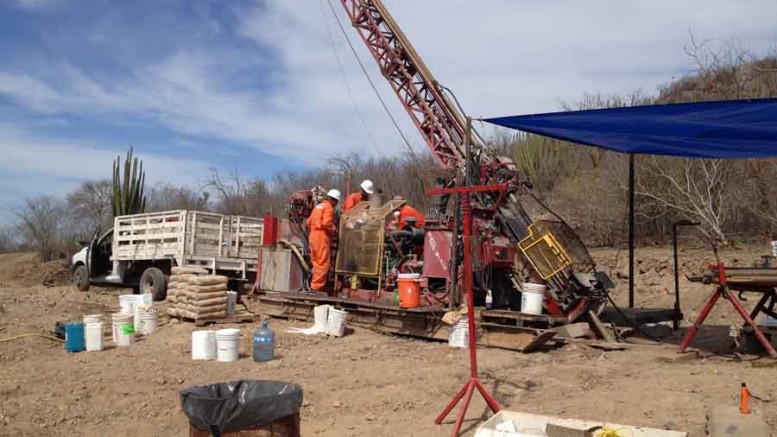
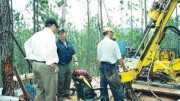
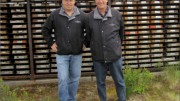
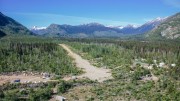
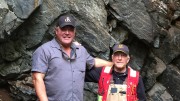
Be the first to comment on "Westridge: On the trail for Mexican gold at Charay"